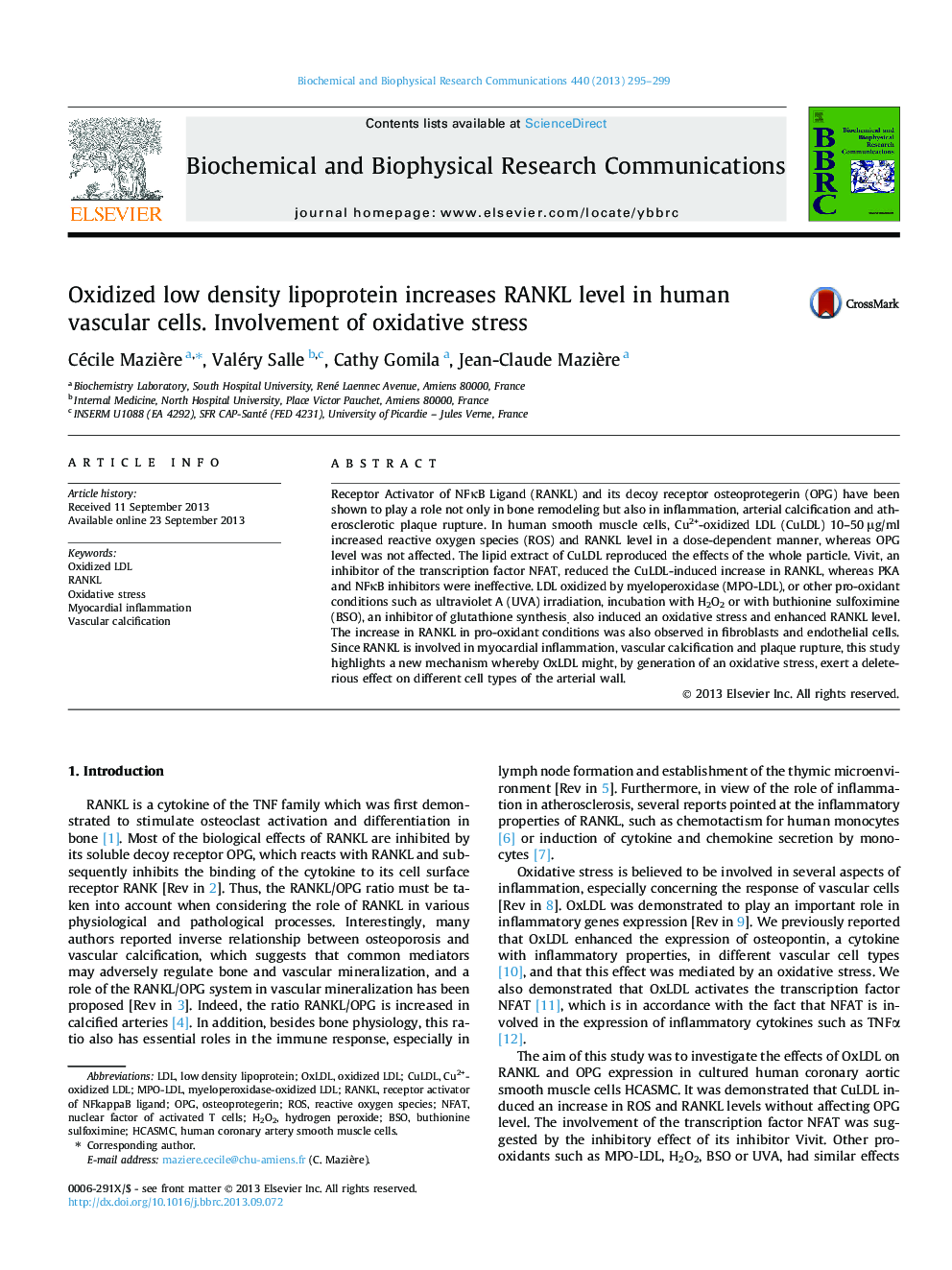| Article ID | Journal | Published Year | Pages | File Type |
|---|---|---|---|---|
| 10757757 | Biochemical and Biophysical Research Communications | 2013 | 5 Pages |
Abstract
Receptor Activator of NFκB Ligand (RANKL) and its decoy receptor osteoprotegerin (OPG) have been shown to play a role not only in bone remodeling but also in inflammation, arterial calcification and atherosclerotic plaque rupture. In human smooth muscle cells, Cu2+-oxidized LDL (CuLDL) 10-50 μg/ml increased reactive oxygen species (ROS) and RANKL level in a dose-dependent manner, whereas OPG level was not affected. The lipid extract of CuLDL reproduced the effects of the whole particle. Vivit, an inhibitor of the transcription factor NFAT, reduced the CuLDL-induced increase in RANKL, whereas PKA and NFκB inhibitors were ineffective. LDL oxidized by myeloperoxidase (MPO-LDL), or other pro-oxidant conditions such as ultraviolet A (UVA) irradiation, incubation with H2O2 or with buthionine sulfoximine (BSO), an inhibitor of glutathione synthesis, also induced an oxidative stress and enhanced RANKL level. The increase in RANKL in pro-oxidant conditions was also observed in fibroblasts and endothelial cells. Since RANKL is involved in myocardial inflammation, vascular calcification and plaque rupture, this study highlights a new mechanism whereby OxLDL might, by generation of an oxidative stress, exert a deleterious effect on different cell types of the arterial wall.
Keywords
OPGhCASMCCu2+-oxidized LDLCuLDLoxLDLBSORANKLNFATOxidized LDLROSHydrogen peroxideOsteoprotegerinmyocardial inflammationbuthionine sulfoximineOxidative stresshuman coronary artery smooth muscle cellsNuclear Factor of Activated T Cellslow density lipoproteinLDLH2O2Vascular calcificationReactive oxygen species
Related Topics
Life Sciences
Biochemistry, Genetics and Molecular Biology
Biochemistry
Authors
Cécile Mazière, Valéry Salle, Cathy Gomila, Jean-Claude Mazière,
